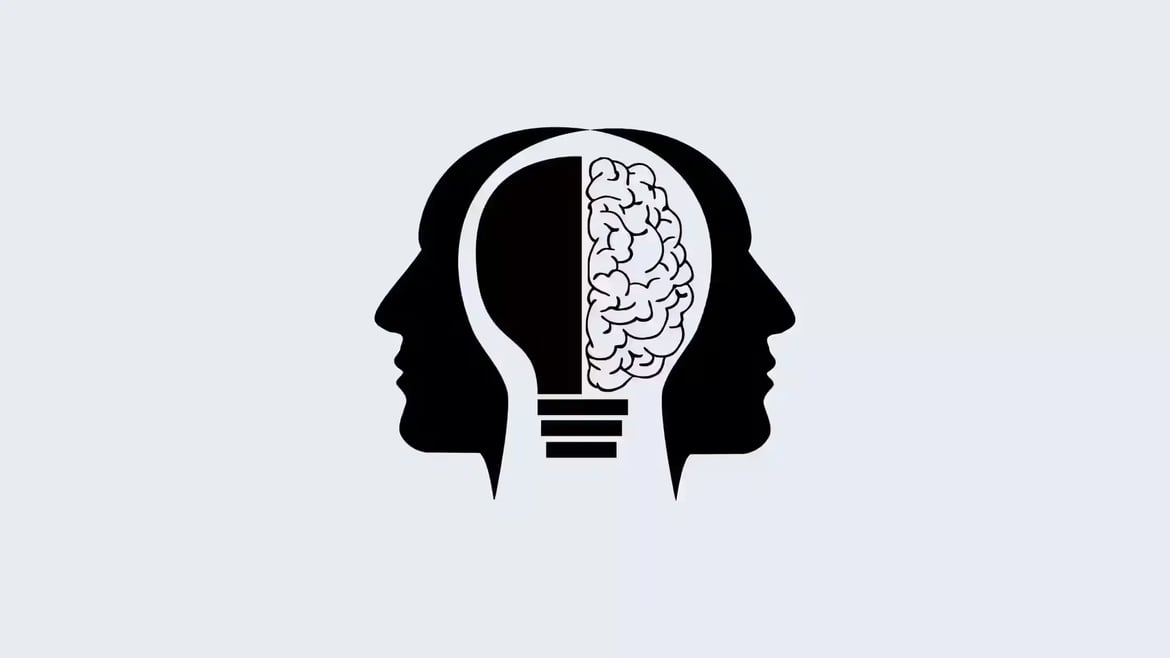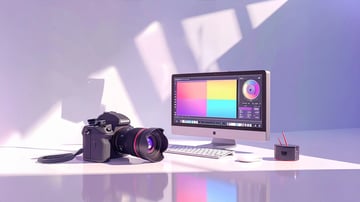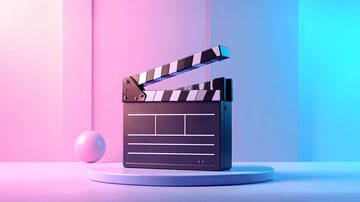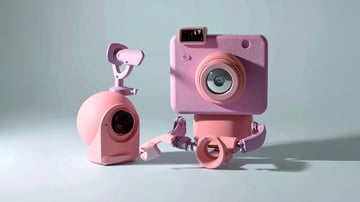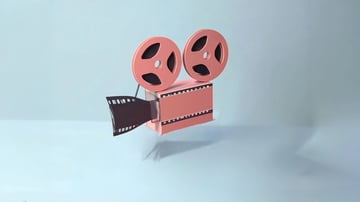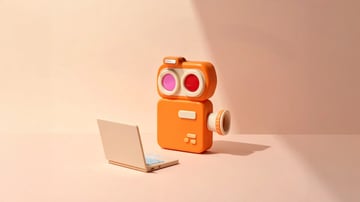Do you find yourself endlessly tweaking that one transition, knowing deep down it's already perfect? Does your heart race whenever a client email pops up, fearing another round of revisions? Are you constantly second-guessing your creative decisions, even after delivering the project?
If you're nodding along, you're experiencing what countless video editors face daily —the anxiety of turning hours of raw footage into compelling stories. Success today demands both mental equilibrium and creative brilliance beyond just technical expertise.
Maybe you're sitting there right now, shoulders tense, eyes burning from staring at your editing timeline for hours. Perhaps you've felt that knot in your stomach when a render fails right before an upload deadline. The constant juggle between perfectionism and timelines, creative vision and complex process, can leave even the most experienced creators & editors feeling overwhelmed.
But here's the truth: you're not alone in this, and more importantly, there are real, actionable ways to take back control of your creative life without compromising the quality of your work. As someone who's been in those late-night editing sessions and felt that familiar anxiety creeping in, I'm here to share practical strategies that actually work in the real world of video editing.
Let's explore how you can transform this anxiety from a creative roadblock into a manageable part of your editing journey.
1. Identify Your Stressors
Understanding what triggers your anxiety as a video editor is like creating a roadmap to peace of mind. Think of yourself as a detective investigating the root causes of your stress. Is it the dreaded "now-now" client requests (or perhaps your own targets for yourself) that make your heart race? Or perhaps that moment when your software decides to crash during a crucial export?
“Every great editor has felt overwhelmed. The best ones built systems to manage it”.
As an editor, your stressors might include the relentless deadlines that seem to chase you like a ticking clock or the perfectionist in you who can't stop tweaking that transition for the hundredth time. Maybe it's the fear of client feedback that keeps you up at night or the constant battle between creativity and technical limitations.
Take some time to observe yourself. Notice when your shoulders tense up or when your mind starts racing. Is it during complex editing sequences? When dealing with challenging clients? Or when trying to balance multiple projects? Identifying these triggers isn't just busy work—it's your first step toward creating a more balanced and enjoyable editing career.
Remember, everyone’s stress triggers are unique. What causes anxiety for someone else might be a breeze for you, and vice versa. The key is to recognize your personal pressure points so you can develop targeted strategies to handle them effectively.
2. Understanding the Neurological Landscape
The contemporary video editor's workstation represents more than just a technical interface—it constitutes a complex neurological environment where sustained creative output intersects with psychological demands. Understanding the intricate relationship between neurological arousal and creative performance becomes paramount for maintaining optimal editing capabilities.
Professional editors frequently encounter elevated trauma load through extended exposure to emotionally charged footage and the inherent pressures of post-production workflows. This phenomenon necessitates a sophisticated approach to arousal regulation and self-awareness. Research indicates that establishing a structured day serves as a foundational element in maintaining neurological equilibrium. By implementing strategic self-care strategies, editors can effectively modulate their psychological state while maintaining creative acuity.
The integration of grounding techniques and restorative activities proves essential in preventing secondary trauma—a common occurrence in intensive editing sessions. These methodologies extend beyond simple relaxation practices, encompassing the strategic utilization of soothing images and the cultivation of meaningful social connections. When editors experience burnout, these practices serve as critical interventions, facilitating the restoration of optimal cognitive function and creative capacity.
3. Immediate Relief
Let's talk about those moments when you're deep in a project, and suddenly everything feels overwhelming. You know the feeling—when the creative flow hits a wall, and anxiety starts creeping in. Instead of letting those moments derail your editing session, I've got something that's been a real game-changer in my editing journey.
I call it the EDIT method, and I promise it's simpler than color grading a LOG footage! It's a quick reset protocol that works right from your editing station. The best part? You don't need to step away from your project or lose your creative momentum.
Think of this method as your personal editing suite first-aid kit. Here's how it works:
E—Embrace the Present: Ground Yourself
Here's my favorite part: Place your hands flat on your desk. Feel its sturdy surface beneath your palms. Notice how this simple action already starts shifting your focus? Now, take three deep, full breaths. You've got this!
D—Define What Matters: Get Crystal Clear
Take a quick mental snapshot: What's the one thing that needs your attention right now? Not tomorrow's challenges or yesterday's hiccups – just this moment. Pretty clarifying, right?
I—Inspired Action: Make Your Move
Now that you're centered and clear, pick that one action that will move you forward. Maybe it's creating a quick backup or perhaps reaching out to a peer. Small steps lead to big wins!
T—Track and Tweak: Stay Flexible
Watch how your anxiety responds. Think of yourself as a scientist observing an experiment—what's working? What needs adjusting? You're in control here.
Bonus Power Move: I love teaching this one to my editing friends—it's called the 20-20 Vision Reset. Every 20 minutes, look at something 20 feet away for 20 seconds. Not only will your eyes thank you, but you'll also break that anxiety spiral before it starts. It's like hitting the refresh button for both your vision and your mind!
Remember: These aren't just techniques—they're your tools for mastery. Every time you use them, you're building stronger editing muscles and a calmer creative mind.
4. Technical Resilience
Ask any video editor about their biggest challenges; technical anxiety often tops the list. Whether you're a veteran or just starting, those moments of uncertainty can grip you when you least expect them. But here's the truth: you can transform that anxiety into your greatest ally. Let me share with you 3 powerful steps that will help you build a rock-solid editing workflow.
First, think of your editing suite as your personal command center. Setting up a reliable backup system goes beyond disaster prevention—it empowers you to experiment boldly, knowing your work is safe. Make it a habit to back up your projects daily, and you'll never have to second-guess those bold creative choices.
As Thomas Flight (800K+ subscribers) emphasizes:
"Your backup system isn't paranoia—it's professionalism.”
Second, create project templates that work for you. Start simple—organize your bins, set up your preferred sequence settings, and save your go-to effects presets. These aren't just time-savers; they're your roadmap through each project, keeping you focused when anxiety derails your flow.
Finally, and this is crucial, treat your workstation like a professional kitchen. Keep your project files organized, your software updated, and your drives optimized. A clean, well-maintained workspace goes beyond mere tidiness—it's about eliminating those small technical hiccups that can snowball into significant stress points.
When you know every tool is in its place and working perfectly, you can fully immerse yourself in what you do best: crafting compelling stories through your edits.
5. Creative Confidence Building
Creativity thrives in a calm mind and the art of staying calm extends far beyond technique—it flows from building your personal creative haven before the first frame comes into view. Here's the game-changer that transformed my editing life:
Start by creating your own pre-editing ritual. Think of it as your creative launch pad. I discovered that something as fundamental as color coding becomes your secret weapon—imagine blues flowing through your dialogue tracks, rich greens marking your B-roll sequences, and warm, vibrant tones highlighting those powerful story moments, it's like painting your creative roadmap.
“The secret to consistent creativity isn't waiting for inspiration – it's building a routine that welcomes it."
—Walter Murch, Academy Award-winning editor
Before you dive in, gift yourself those precious first five minutes. Put on your headphones, and lose yourself in reference videos that set your creativity on fire. Watch how master editors craft their magic. These aren't just random habits or productivity hacks—they're your armor against self-doubt, your bridge from chaos to clarity.
Every time you honor these rituals, you're literally rewiring your brain, teaching it to switch from that frantic 'fight-or-flight' mode into what I call your 'flow state.' Soon enough, just sitting down at your workstation becomes a trigger for creativity rather than anxiety.
6. Communication Strategy With Client (if applicable)
"Clear communication prevents 90% of revision anxiety."
Let's talk about something I've seen trip up even the most talented editors—Client communication. Here's what I want you to remember: those anxiety-inducing client interactions can absolutely be turned into productive conversations.
First, set yourself up for success by creating a simple feedback system. Think of it like setting up your editing timeline—everything needs its proper place and structure. Instead of letting clients drop feedback randomly throughout the project, guide them toward scheduled milestone reviews. It's like setting chapter markers in your timeline—it keeps everything organized and prevents that overwhelming flood of constant revisions.
Second, and this is important: stop seeing yourself as someone who cuts footage. You're a creative consultant, bringing your storytelling expertise to the table. Own that role. When you speak to clients, let that expertise shine through in your voice, recommendations, and solutions.
Remember, your creative decisions come from experience, not guesswork. So next time you present your work, share your thinking behind that dramatic cut or that subtle transition. Help clients understand the 'why' behind your choices. Trust me, this approach transforms those nervous client calls into collaborative strategy sessions.
Casey Neistat (11M+ subscribers) says:
"The client relationship is a partnership, not a dictatorship."
7. The Professional's Wellness Protocol
"Your anxiety acts as a compass, pointing you toward the systems you need to strengthen."
After years in the editing room, let me share something I've learned: your mental well-being is your most powerful editing tool. Think of it this way—just as you wouldn't run your editing software for days without a reboot, you can't expect your mind to perform at its best without proper rest.
Here's what works wonders: break your day into 90-minute editing sprints. I know this might feel counterintuitive when deadlines are breathing down your neck, but trust me on this. When that timer hits 90 minutes, step away from your workstation. Take a real break—stretch, walk around, or grab a coffee. Your creativity isn't some endless well you can keep drawing from—it needs time to refill.
The best editors I know aren't the ones who can pull 12-hour marathon sessions; they're the ones who've mastered the art of working in rhythms that respect their mental energy. Your creativity resembles a living garden which requires constant care and nurturing to thrive.
"Your body is your most important piece of editing equipment. Treat it that way."
— Parker Walbeck (Full Time Filmmaker)
8. Long-term Professional Development
"Learning is the antidote to technical anxiety.”
Let's talk about growing as an editor because, believe me, investing in your skills is one of the best antidotes to anxiety. Consider your editing journey a continuous path, not a race to some finish line.
Set aside a 'skill-building hour' in your week—maybe it's early Tuesday mornings or quiet Sunday afternoons. Use this time to experiment with new transitions you've been curious about, master those keyboard shortcuts that have been slowing you down, or finally dive into that color grading technique you've been putting off.
Stay curious about your craft. When a new software update drops, don't just skim the changelog—pick one new feature and really get to know it. Watch how other editors work, and join online communities.
And remember that even those viral videos you admire were edited by someone who once sat where you are now. The more you expand your editing toolkit, the more those anxious thoughts of 'Can I handle this?' transform into 'I know exactly how to tackle this.”
9. Seek Feedback and Support
Professional video editing often feels like a solitary journey, but connecting with others can transform your experience and reduce anxiety. Here's how to build meaningful professional relationships:
Connect with fellow editors through online forums, local meetups, or professional associations. Join platforms like Frame.io or Vimeo's video review system to get structured feedback on your work. Remember, criticism isn't personal—it's a stepping stone to improvement.
Create your support system by:
- Participating in video editing communities on Reddit, Discord, or LinkedIn
- Attending industry events and workshops
- Finding a mentor in post-production
- Sharing works-in-progress with trusted colleagues
As Jordan P., an experienced post-production manager, emphasizes:
"Being able to take feedback is absolutely essential."`
This mindset shift helps transform critique from a source of anxiety into a valuable growth tool.
Conclusion
Feeling anxious while video editing shows your deep commitment to excellence; it proves you're invested in creating something meaningful. By approaching it with professional strategies rather than viewing it as a personal failure, you transform it from a creative hindrance into a manageable aspect of your career.
Remember, the same precision you apply to your edits can be applied to managing your mental wellness. You have the power to edit anxiety out of your professional story. Think of them as your creative conscience, pushing you toward excellence. Just as you masterfully control your editing timeline, you can learn to direct these feelings into positive action.
Take it from someone who's been there: when you start treating anxiety as a professional challenge rather than a personal shortcoming, something remarkable happens. It transforms from this overwhelming force into just another aspect of your workflow—one that you can manage, adjust, and even use to your advantage.
You've got this. Beyond video editing, you craft emotional narratives, and your own story deserves that same creative passion.
